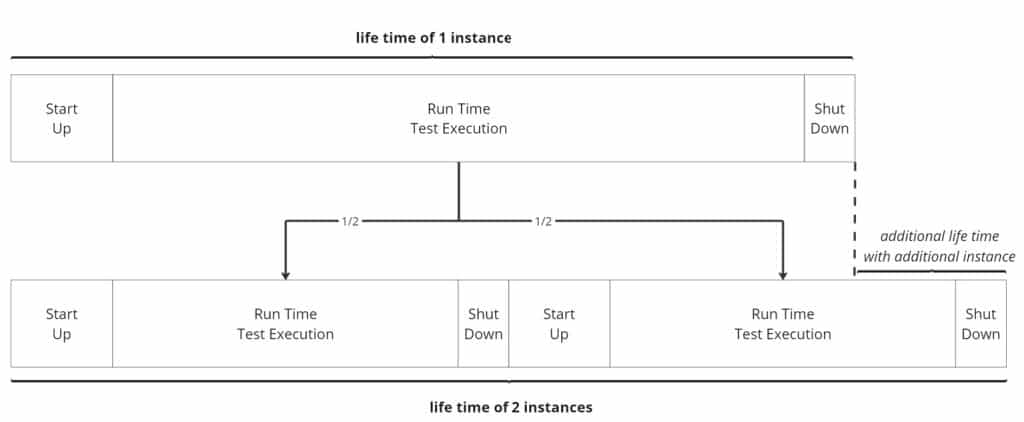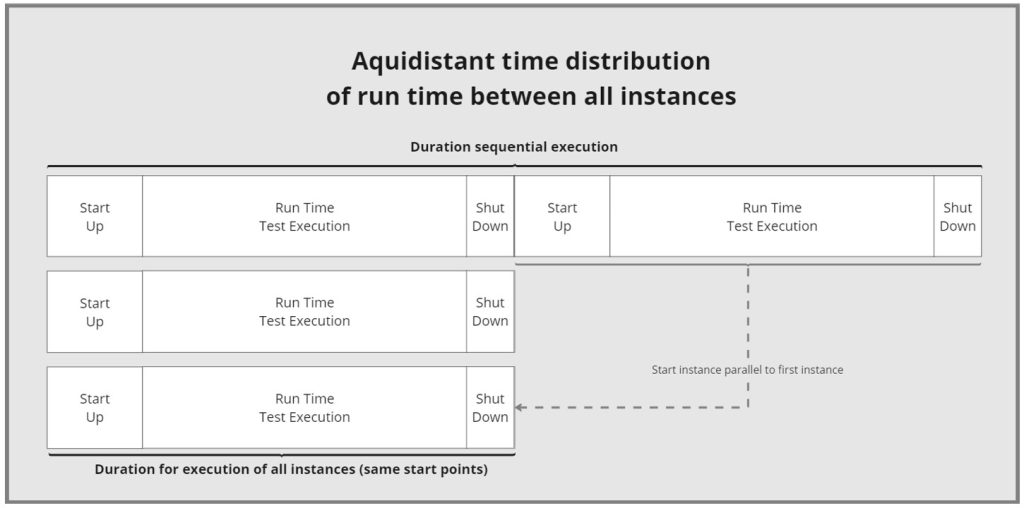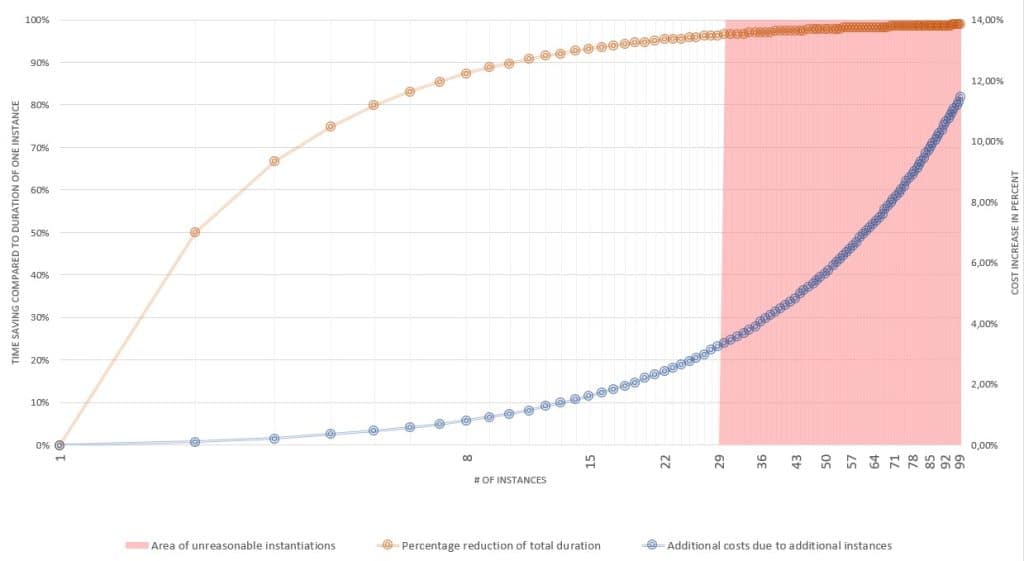Home » TPT » Cloud Testing with TPT: Case Study with AGSOTEC » Costs in Cloud Testing » Costs when Scaling with Multiple Instances
Costs when Scaling with Multiple Instances
One of the main reasons for testing in the cloud is to reduce the test duration, which is the time from starting the test to receiving the test results. This is technically achieved by distributing the tests across multiple parallel cloud instances.
The advantage of this highly scalable approach is that, within certain limits, the overall test duration can be reduced nearly linearly, while the additional instances required for this incur only minimal extra costs.







